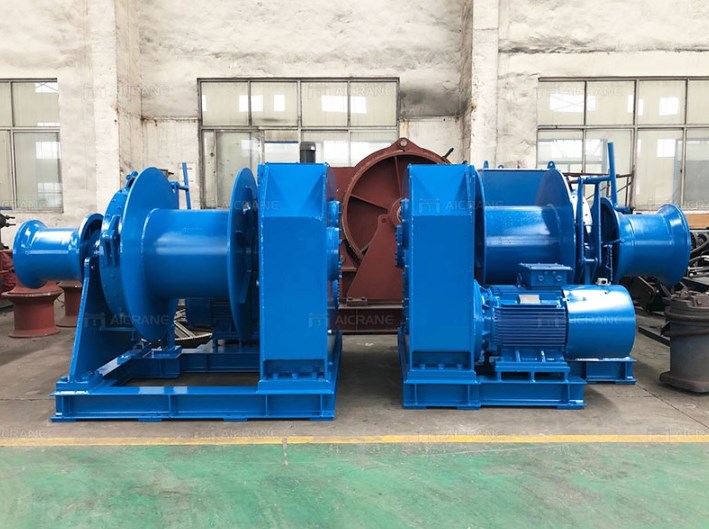A Comprehensive Guide to Using Marine Electric Winches
Marine electric winches are indispensable tools in the maritime industry, facilitating various tasks such as anchoring, mooring, lifting, and hauling heavy loads. These powerful machines provide efficiency and precision in handling essential operations on vessels of all sizes. In this comprehensive guide, we will explore the key steps and considerations for effectively using a marine electric winch to ensure safe and efficient maritime operations.
Understanding Marine Electric Winches
Before delving into their usage, it's crucial to have a clear understanding of marine electric winches and their components:
Winch Drum: The winch drum is a cylindrical component around which the cable or rope is wound. It is responsible for winding or unwinding the cable, which performs the work.
Electric Motor: The electric motor is the power source that drives the winch drum. It converts electrical energy into mechanical power.
Cable or Rope: A strong and durable cable or rope is wound around the drum. The choice of cable material and size depends on the specific application and load requirements.
Control System: The control system allows operators to manipulate the winch's functions, including winding, unwinding, and controlling the tension of the cable or rope.
Using a Marine Electric Winch: Step-by-Step Guide
Safety First
Safety should always be the top priority when using a marine electric winch machine. Before starting any operation, ensure that all crew members are aware of safety protocols and have the necessary personal protective equipment (PPE) in place. This may include helmets, gloves, safety goggles, and life jackets, depending on the specific task.
Inspect the Winch and Cable
Before using the winch, conduct a thorough inspection of both the winch and the cable or rope. Look for signs of wear, damage, or corrosion. Pay attention to the winch drum, cable guide, and control system. If you detect any issues, address them promptly, as using damaged equipment can lead to accidents.
Prepare the Work Area
Clear the work area of any obstacles or hazards that could interfere with the winching operation. Ensure that the cable or rope has a clear and unobstructed path. If you're using the winch on a vessel, make sure the deck is clean and free from debris.
Select the Appropriate Cable or Rope
Choose the correct type and size of cable or rope for the specific task. The cable should have the necessary strength and durability to handle the load and conditions it will encounter. Consult the winch's user manual or guidelines for cable specifications.
Power On the Winch
Turn on the electric winch by activating the power source. Ensure that the winch's control panel is functioning correctly and that all switches and buttons are in good working order. If there are any faults or malfunctions, do not proceed with the operation until they are resolved.
Engage the Brake
Before winding or unwinding the cable, engage the winch's brake system. This prevents the drum from moving when not in use and enhances safety during cable attachment or detachment.
Attach the Cable Securely
Attach the cable or rope to the load that needs to be lifted or moved. Ensure that the attachment point is secure and appropriate for the load. It's essential to follow the recommended attachment methods and guidelines provided by the winch manufacturer.
Operate the Winch
Using the control system, operate the winch to wind or unwind the cable as needed. Pay close attention to the direction of rotation, ensuring it aligns with the task at hand. Use the winch's controls to adjust the speed and tension as required.
Monitor Load and Tension
Keep a constant watch on the load being lifted or moved and the tension on the cable. Avoid overloading the winch, as this can lead to equipment damage or failure. Many marine electric winches are equipped with load indicators or tension sensors to assist with monitoring.
Maintain Communication
Effective communication is crucial during winching operations, especially when visibility is limited or noise levels are high. Use hand signals or two-way radios to maintain communication between operators and crew members.
Emergency Procedures
Be prepared for emergency situations. Familiarize yourself with the winch's emergency stop procedures and the location of emergency shutdown switches. Train all personnel involved in the operation on how to respond to emergencies quickly and effectively.
Avoid Overheating
Prolonged or excessive use of a marine electric winch can lead to overheating. Monitor the winch's temperature and allow it to cool down if it becomes too hot. Continuous operation without adequate cooling can damage the motor and other components.
Regularly Inspect and Maintain
After completing the winching operation, conduct a post-operation inspection of the winch, cable, and associated equipment. Look for signs of wear or damage and address any issues promptly. Regular maintenance and lubrication are essential to ensure the winch remains in optimal working condition.
Power Down and Secure the Winch
Once the operation is complete and the cable is secured, power down the winch and disengage the brake. Ensure that the winch is in a safe and secure state for storage or future use.
Conclusion
Marine electric winches are versatile and powerful tools that play a vital role in various maritime operations. When used correctly and with safety as a top priority, they can enhance efficiency and safety in tasks such as anchoring, mooring, lifting, and hauling. This step-by-step guide serves as a comprehensive reference for operating marine electric winches safely and effectively. By following these guidelines, maritime professionals can ensure the proper use of these essential tools, contributing to safer and more efficient maritime operations.




Comments
Post a Comment